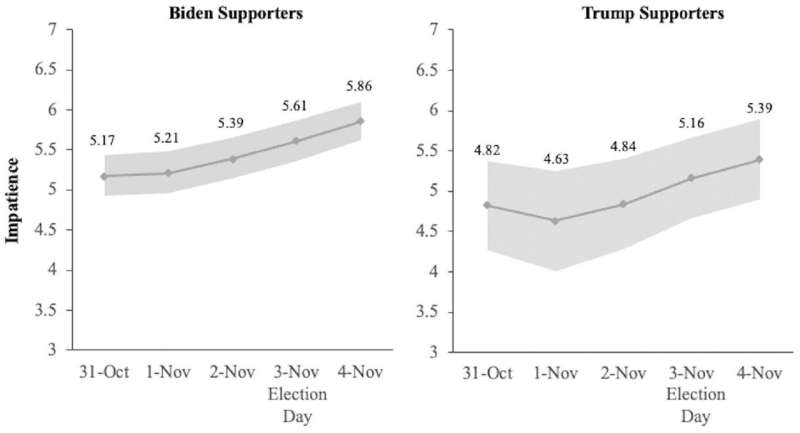Impatience to Find Out the Results of the 2020 Presidential Elections Increased Closer to the End of the Wait for Both Biden Supporters and Trump Supporters (Study 1), Even After Election Day on November 3. Note. Shaded regions represent 95% confidence intervals. Credit: Social Psychological and Personality Science (2023). DOI: 10.1177/19485506231209002
A new study answers a timely question: What is the hardest part of waiting? Consumers do plenty of it—online, in line, in traffic, or for deliveries. And now we know it's the final phase that's most problematic for them.
In this season of joyful—and not-so-joyful—anticipation, the research has profound implications for marketers and psychological insights for us all, says Annabelle Roberts, co-author and assistant professor of marketing at the University of Texas McCombs School of Business. The paper shows:
- It's better for companies to communicate possible delays early in the wait;
- It's better for them to overestimate the waiting period than to underestimate it;
- A less harmful experience of waiting can lead to a more positive evaluation of a service.
Across six studies by Roberts and colleagues, subjects felt the highest levels of impatience as the end of the waiting period approached—regardless of how long they had already been waiting. Each study measured consumer reactions to waiting on real-world events, from 2020 election results or a first shot of a COVID-19 vaccine to the arrival of a bus or a package.
The underlying cause, the studies found, was people's desire for closure. As a wait is about to end, desire gets stronger, and so does impatience.
Roberts' paper, co-authored with Ayelet Fishbach of the University of Chicago, was just published in Social Psychological and Personality Science.
More information: Annabelle R. Roberts et al, Impatience Over Time, Social Psychological and Personality Science (2023). DOI: 10.1177/19485506231209002
Journal information: Social Psychological and Personality Science
Provided by University of Texas at Austin























